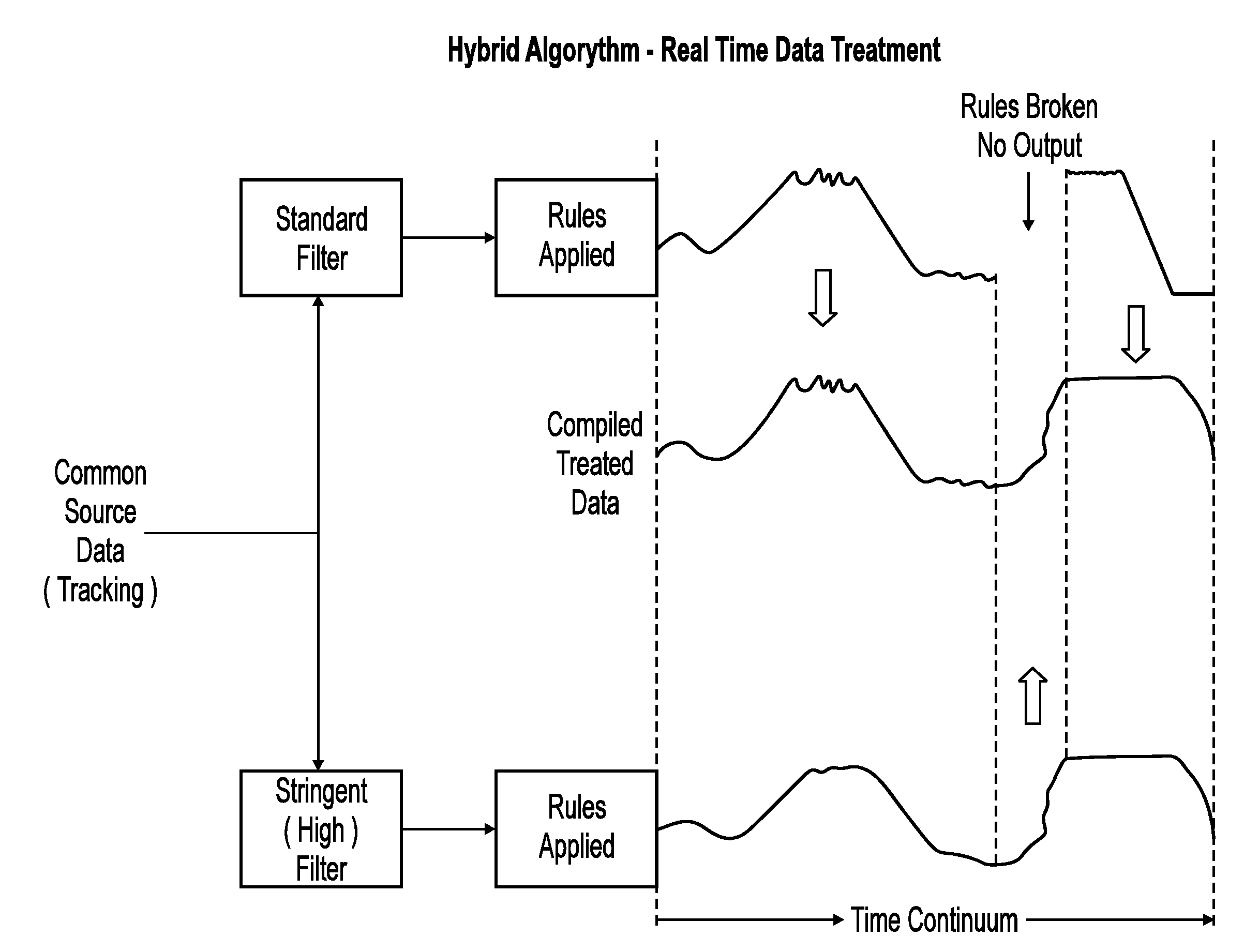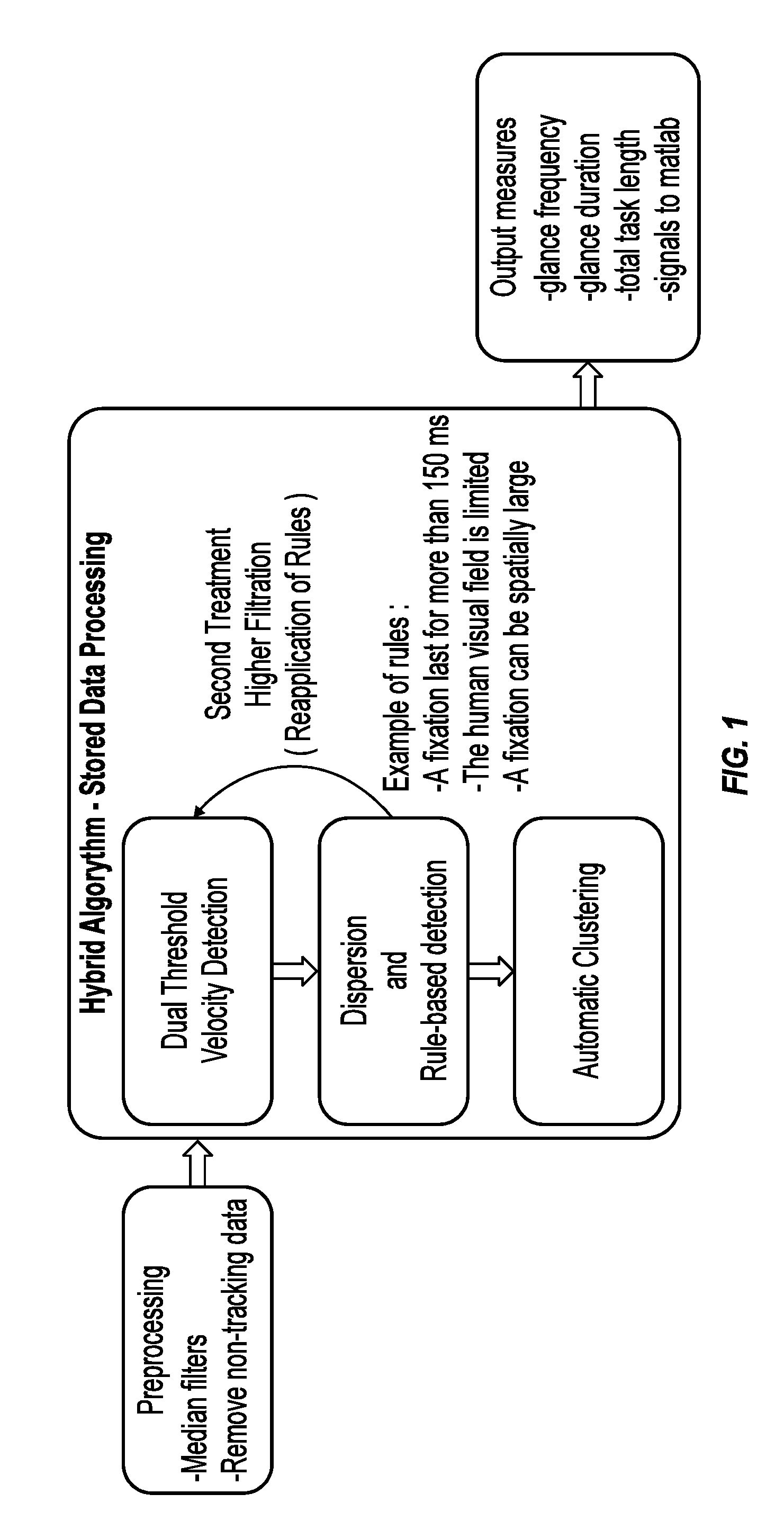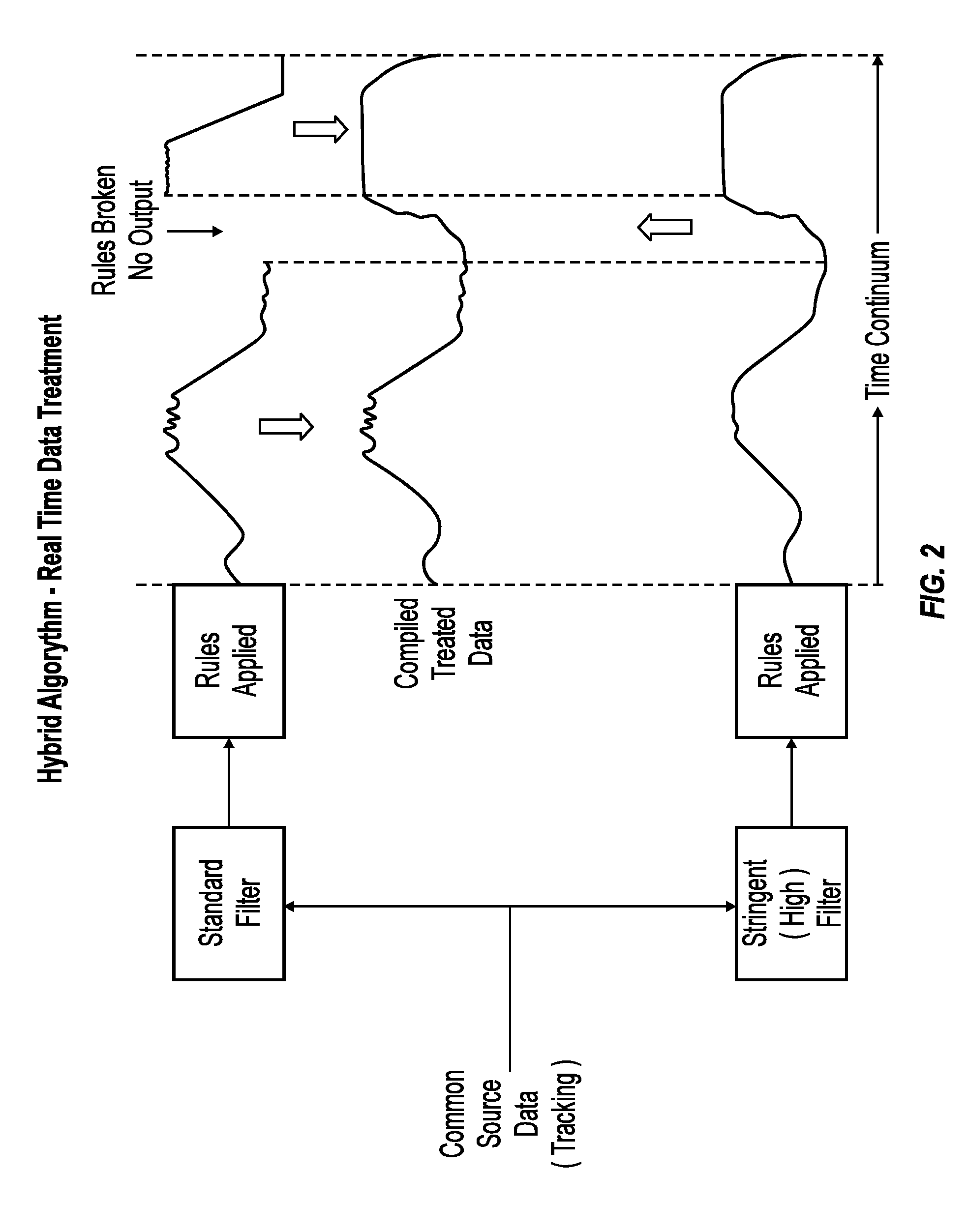Method and arrangement for interpreting a subjects head and eye activity
a technology of eye activity and head, applied in the direction of digital data processing details, input/output processes of data processing, vehicle position/course/altitude control, etc., can solve the problems of difficult comparison of research results, few, if any, suitable automated tools for performing analysis, and manual analysis. , to achieve the effect of reducing human rating and robust against errors and nois
- Summary
- Abstract
- Description
- Claims
- Application Information
AI Technical Summary
Benefits of technology
Problems solved by technology
Method used
Image
Examples
Embodiment Construction
Before the actual data treatment techniques that are the focus of the presently disclosed invention(s) are described, some basic information will be provided regarding rudimentary characteristics of eye movements, as well as some general information about typical tracking systems that can be used to sense, quantify, and optionally record data descriptive of head and / or eye orientation (location and movement characteristics) in an effort to facilitate those readers possessing less than ordinary skill in these arts.
With respect at least to eye movement-based systems, presently available sensing systems used for gathering eye movement data deliver “raw” eye-movement signals that are rather noisy and which includes artifacts. As will become evident from reading the balance of the present disclosure, typically, head orientation tracking data can be utilized as an approximation, and therefore often a valid substitute for eye tracking data. Since eye tracking data obviously almost alway...
PUM
 Login to View More
Login to View More Abstract
Description
Claims
Application Information
 Login to View More
Login to View More - R&D
- Intellectual Property
- Life Sciences
- Materials
- Tech Scout
- Unparalleled Data Quality
- Higher Quality Content
- 60% Fewer Hallucinations
Browse by: Latest US Patents, China's latest patents, Technical Efficacy Thesaurus, Application Domain, Technology Topic, Popular Technical Reports.
© 2025 PatSnap. All rights reserved.Legal|Privacy policy|Modern Slavery Act Transparency Statement|Sitemap|About US| Contact US: help@patsnap.com



